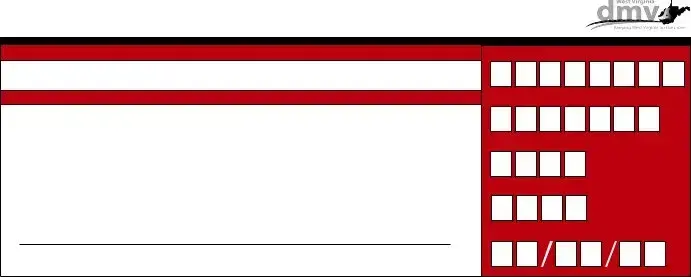When it comes to the process of surrendering a vehicle registration plate in West Virginia, several misconceptions frequently arise. Misunderstandings may stem from a lack of familiarity with the procedures or the nuances of the law. Here, we will clarify some of the common misconceptions associated with the License Plate Surrender WV form (WV-4S).
Misconception #1: The form is only for plates that are lost or stolen.
While the form does specifically mention the surrender of plates that are lost or stolen, it's also applicable in scenarios where the plate is physically available but the owner wishes to surrender it to the Division of Motor Vehicles for other reasons such as vehicle sale, disposal, or relocation out of state.
Misconception #2: Surrendering the plate is optional.
Under West Virginia Law Code §17D-2A-1 et seq., plate surrender is mandatory in certain situations, such as when cancelling insurance on a vehicle without transferring the plate to a new vehicle. The act of not surrendering the plate under these circumstances might lead to legal and financial ramifications.
Misconception #3: Anyone can surrender the plate on behalf of the owner.
Only the listed owner(s) of the vehicle, as shown on the vehicle title, can legally sign the License Plate Surrender form. This requirement ensures that the surrender process is legally binding and reduces the risk of fraudulent claims.
Misconception #4: Personal information is not protected in this process.
The Division of Motor Vehicles takes privacy and the protection of personal information very seriously. Information submitted through the License Plate Surrender form is used solely for the purpose of processing the surrender and is protected according to privacy laws.
Misconception #5: There is a fee to surrender a license plate.
West Virginia does not charge a fee to surrender a license plate. This process is designed to be accessible to all vehicle owners who need to comply with the requirements of the law, without imposing a financial burden.
Misconception #6: The form requires detailed reasons for the plate surrender.
The form primarily requires the owner to state whether the plate has been lost or stolen. Detailed explanations regarding why the plate is being surrendered are not needed, simplifying the process for vehicle owners.
Misconception #7: A new plate is automatically issued after surrender.
Surrendering a plate does not automatically trigger the issuance of a new plate. If a vehicle owner requires a new plate for a new or existing vehicle, they must apply for it separately through the appropriate DMV transaction.
Misconception #8: The surrender form can be submitted online.
As of the latest information, the License Plate Surrender form must be submitted in person or by mail to the Division of Motor Vehicles. While some states may offer electronic submissions for similar services, it's essential to comply with the specific requirements of West Virginia.
